The impenetrable forest of Bwindi is known to be one of the few places in the world where the mountain gorilla can be seen. This primate, the largest of all, inhabits the high mountains of this area of Uganda together with the Virunga Mountains divided into three national parks in three different countries: the Virunga National Park in the Democratic Republic of the Congo, the Mgahinga National Park Gorilla in Uganda and the Volcanoes National Park in Rwanda (PNV).
This forest, however, apart from housing the last families of this endangered animal and being the most important park in Uganda, is also a world heritage site for its biodiversity, which deserves to be added to your itinerary through the country, even if you can’t afford the $700 trekking with the gorillas is worth.
The park was protected in 1932 when it was discovered until in 1964 it was officially recognized as a sanctuary by gorillas. It was not until 1994, when UNESCO considered it a world heritage site on its list.
The objective of the majority of visitors who visit Bwindi is to trek with gorillas, endangered animals that currently in the wild can be found around 1,000 specimens around the world. If you want to know more about this fantastic animal, you can click here.
Bwindi Park has about 330 square km of forest with stunning views of mist creeping through the trees. Apart from the almost 400 gorillas that the park has, the impenetrable forest of Bwindi has a great biodiversity where 260 species of trees, 202 species of butterflies, 347 species of birds and 120 species of mammals stand out.
The different areas to see the mountain gorillas and how to get there
The Bwindi NP is divided into four regions that will allow you to access the park. The four regions offer gorilla trekking and other activities that you can do once there to discover the area. It is important that you choose well which sector you want to visit and what your transport will be to get there. The 4 sectors are:
BUHOMA: It is the sector of the Bwindi park that began to receive tourists, previously located in the northern part. It is therefore the most accessible and easy to get to. You can visit 3 gorilla families: Mubare (9 members), Rushegura (19 members) and Habinyanja (17 members).
If you travel by public transport, there are 3 direct buses from Kampala that go to Buhoma: The Highway Bus, The Muhabura and the Starlink bus. They also stop in the cities of Mbarara and Butogota, where you can also catch them. It is important that if you go by public transport you do it with time and days of margin to be able to get to the excursion on the day that you have paid the permit. If you come from the north, you will have to use the matatus to Rukungiri and later another one to Butogota. If you come from the south, it will be necessary for you to get to Kanungu with matatus and then take another to Butogota. Once in Butogota, you will have to pay for a taxi or a boda-boda to take you to your accommodation.
RUHIJA: It is the eastern sector of Bwindi Park. In Ruhija you can visit 3 gorilla families: Oruogo, Kyaguiro and Bitukura. If you want to go by public transport, it will be somewhat more difficult than the previous sector because there are not as many frequency of matatus and established lines. The easiest way is to get to Kabale and there to find a matatu that goes to Ruhija.
RUSHAGA: It is the last sector that they have opened in terms of giving permits to see gorillas located in the south of the park. 8 families can be visited, some of them undergoing a habituation process. There is no facility to get there by public transport, so you must book a private transport that takes you from Kisoro or Kabale. The more people you are, the cheaper this option will be, since you pay per car and journey.
NKURINGO: It is the sector that is more to the southwest of the park, near Rushaga, to about 10 km. You can also visit 3 gorilla families: Nkuringo, Bushoho, Christmas. This was the sector we visited and saw the Nkuringo gorilla family, famous for the death a year ago of their silverback leader: Rafiki. Currently in the group there are 4 black backs, among them Rwamutwe who is the son of Rafiki and who leads the group, Tabu who is the second black back and Kamara and Muhoozi, along with 5 females Kwitonda, Kuhirwa, Furaha, Kiiza and Nderema, 2 juveniles and 2 small ones.
It’s the sector that is farthest from public transport. If you want to go to this sector it is important that you book a private transport that takes you from Kisoro or Kabale. The more people you are, the cheaper this option will be, since you pay per car and journey.

Permits and prices
When we were looking at the possibility of visiting the mountain gorillas, many questions arose and the most important were if you can make the visit yourself without the need for an organized tour and what cost did everything have.
The most important thing to get, first of all, is permission to go see these animals. These permits are used to limit the number of people that each group of gorillas will have every day and thus not alter their behavior. Each gorilla family receives a maximum of one hour a day, a group of visitors made up of about eight people.
It is necessary to buy this permit in advance, it is recommended that at least three months before. The permit includes the entrance to the chosen park, a guide who will be the person who will decide which family to visit and the itinerary and also some security rangers for protection (especially in case poachers are found). The price of the permit helps to conserve and protect these animals, the area and other animals that inhabit them.
It is important to know that depending on the destination you choose to go to see the gorillas, the final price will vary a lot. That is, each gorilla trekking destination has its own price which is as follows:
- RWANDA: The gorilla permit in Uganda in the Volcanoes National Park costs about 1,500 USD.
- DEMOCRATIC REPUBLIC OF CONGO: The permit costs about $ 600 for mountain gorillas and $ 400 for eastern lowland gorillas. This option is the cheapest but afterwards you have to add the displacement and the DRC visa.
- UGANDA: The permit for Bwindi Impenetrable Forest or Mgahinga National Park costs 700 USD.
You have to be aware because some countries offer discounts in periods of low demand, as was the case in the COVID period where the permits for the gorillas in Bwindi Park were half price as a visitation claim.
If you decide to do it through an agency, it will be the agency itself that will manage the entire pack: permits, accommodation, transportation. Normally if you want but to get a lower price (within the high budget of going to see them) we recommend that you manage everything yourself.
We decided to visit the gorilla family in Uganda in the Bwindi park, which although it was far from our initial budget, we decided to jump into the pool and try this unique activity in the whole world that many people recommend but we did not know if it was really that. Permit price was worth paying.

Next we will explain how we did it to get the permits, the accommodation and to be able to get to Bwindi National Park in Uganda:
1.- Get gorilla visit permits:
As we have said before, you need to buy a permit that guarantees you to visit the gorillas for one day and an exact sector of the Bwindi. There are only 144 permits available among all sectors, therefore, if you need a specific day and it is in high season, we advise you to buy it in advance. The permit is always reserved by the sector you visit, you cannot choose the gorilla family you will visit.
To buy the permit, you can apply for it through the UWA, Uganda Wildlife Authority. When you ask, you must request a specific day, so it is very important that you have completed your travel tour of the country beforehand. If you do it through UWA, it is important that you do it with a lot of time, because the process is very slow and you have to go to Kampala to find the permits.
We, who were going at the last minute to see if prices would drop and we were not sure what day we would arrive in Bwindi for the car container process, we were going very late. We started the process about 2 weeks after going there and found that it was impossible to get a permit.
Until, thanks to the ioverlander website, we contacted Seith. Seith is an entrepreneur who has different lodges in Uganda, but the first and which is where he is from, is located in Nkuringo, one of the sectors to enter the park. Seith manages permits with less advance notice and can ensure that like us, at the last minute, you can visit the Bwindi. If you process the permit with him, which is worth 700 USD (without commission), we advise you to sleep in his accommodation “Bwindi Backpackers & Gorilla Closeup Lodge”. To book, you can click here or contact Seith directly at +256 7726618542.
2.- Book the accommodation near the entrance gate of the park that you have obtained the permit:
It is important that you book the accommodation near the sector that you have been assigned because on the day of the excursion you must get up early, you will not have to do many kilometers on mountain roads that go up and down. The routes, even if they are only a few kilometers long, need time to complete them since they are mountain roads full of stones and holes.
We stayed at the “Bwindi Backpackers & Gorilla Closeup Lodge”, managed by Seith who got us the permits. This Lodge is very close to Nkuringo and also to Rushaga (you can read more about the accommodation in the section: Where to sleep?).
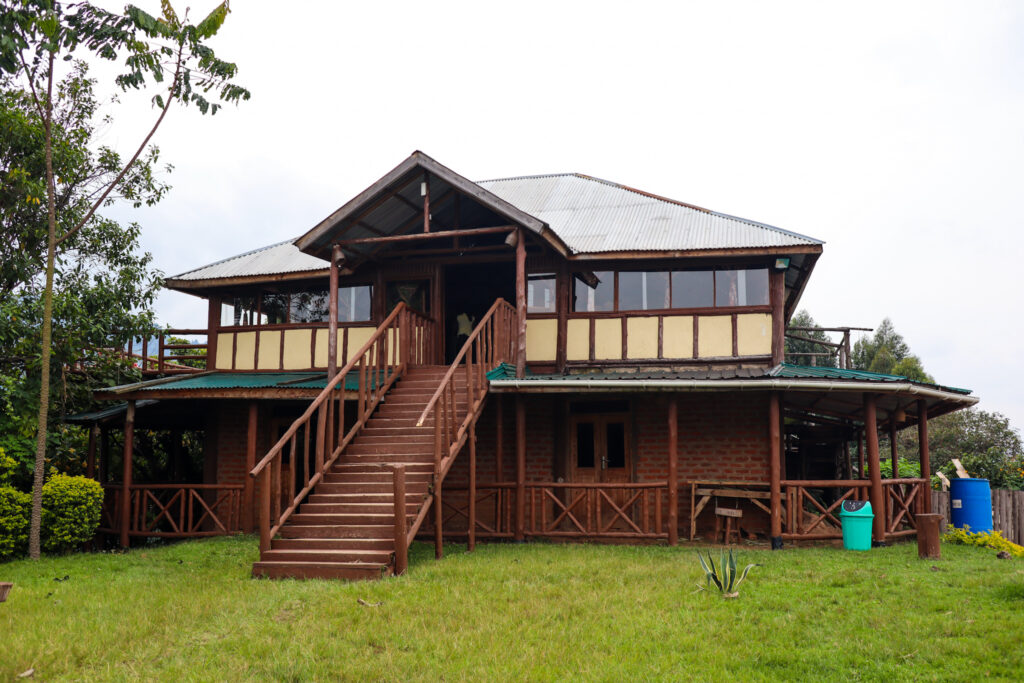
3.- See how you will get there, what will be your transport:
The most used route is the Mweya-Kihihi-Buhoma route. It is the route that many tour operators use to also visit the lions of Ishasha (Queen Elisabeth NP). The park is 160 km from Mweya and 64 km from Ishasha. Therefore, the Buhoma sector is the most accessible. Other available accesses will be from the city of Kabale or Kisoro.
Keep in mind that, whether you go by public transport, pay for private transport or go in your car, it is important to arrive at least 24 hours before the day of your reservation. This will ensure that if something happens along the way, you have enough time to find a solution and be able to get to your accommodation and do the excursion.
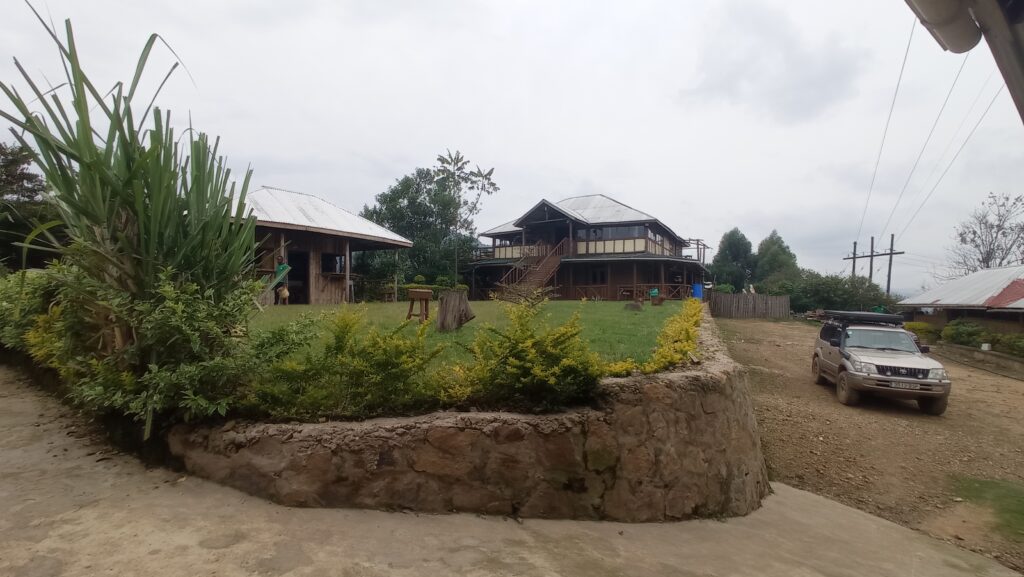
4.- Enjoy the experience:
When the day comes, you just have to enjoy. We were very nervous to start the experience and although seeing them is likely, they also tell you that there is a possibility that you will not see them.
You have to get up early and take the suitcase with everything you need (see the tips). You also need the passport to verify that you are the one with the permit. It is necessary to go to the entrance door of your permit where the visitor reception center is located. There is usually a group of local people who performances traditional dances and songs at the entrance.

Later, the guide will join together the whole group of people who will visit the same family and will explain which family you are going to see and what peculiarities it has. Once the briefing is done, some will ask if someone of you wants to hire a carrier. The carrier is a person who helps you in trekking, can carry your backpack and helps you in complicated steps. The price for the carrier is about 20 USD.
Once everything is organized, the excursion begins to find the awarded gorilla family. In the morning, different trackers in the park make sure to locate the families from the point where they saw them the day before since they don’t move very fast. There is a part of luck to see them or you might not. It is true that there is a high percentage of times that people have seen them.
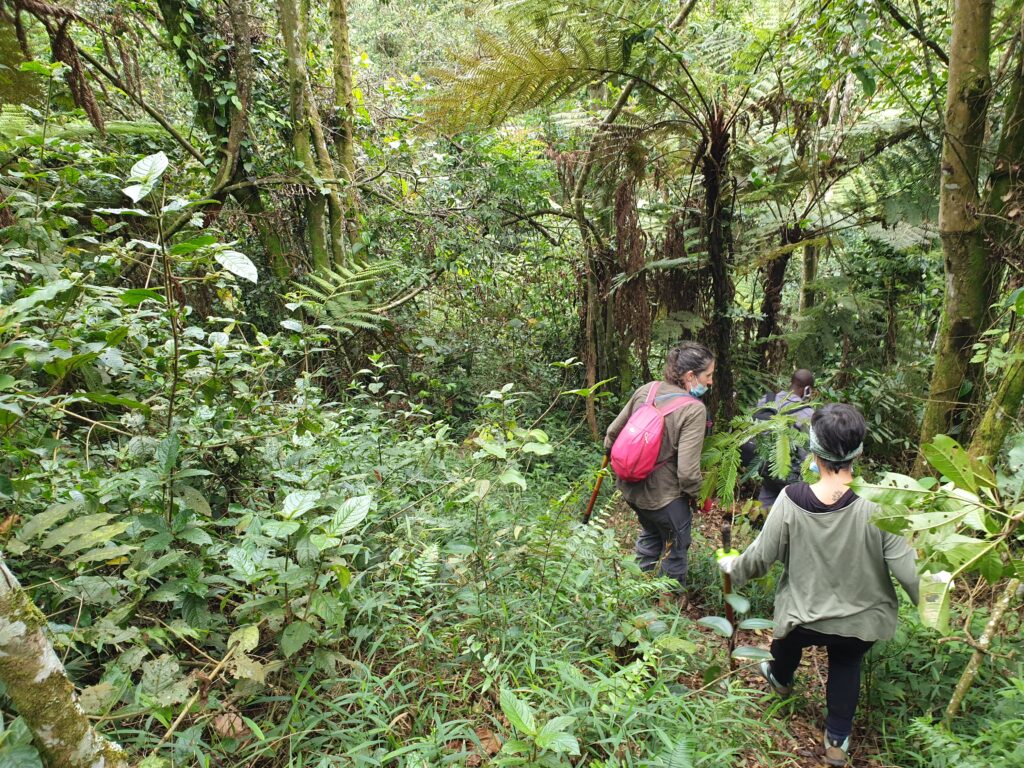
When is the best time to visit the park?
Visiting the mountain gorillas is an activity that is available all year round in all parks in Uganda, DRC and Rwanda. We advise that you try to avoid the long rainy season because it will be more difficult to get there and you will not enjoy spending time with the gorilla family as much.
The dry season is from June to August and also from December to February, making summer the peak season and the best time to go. On the contrary, the rainy season runs from March to May and from September to November.
However, you must not forget that the Bwindi is a tropical forest and that normally the rainfall rates throughout the year are quite high (approximately 1500 mm of rain per year). Do not forget then, a good raincoat just in case as well as warm clothes at night that are quite cold.
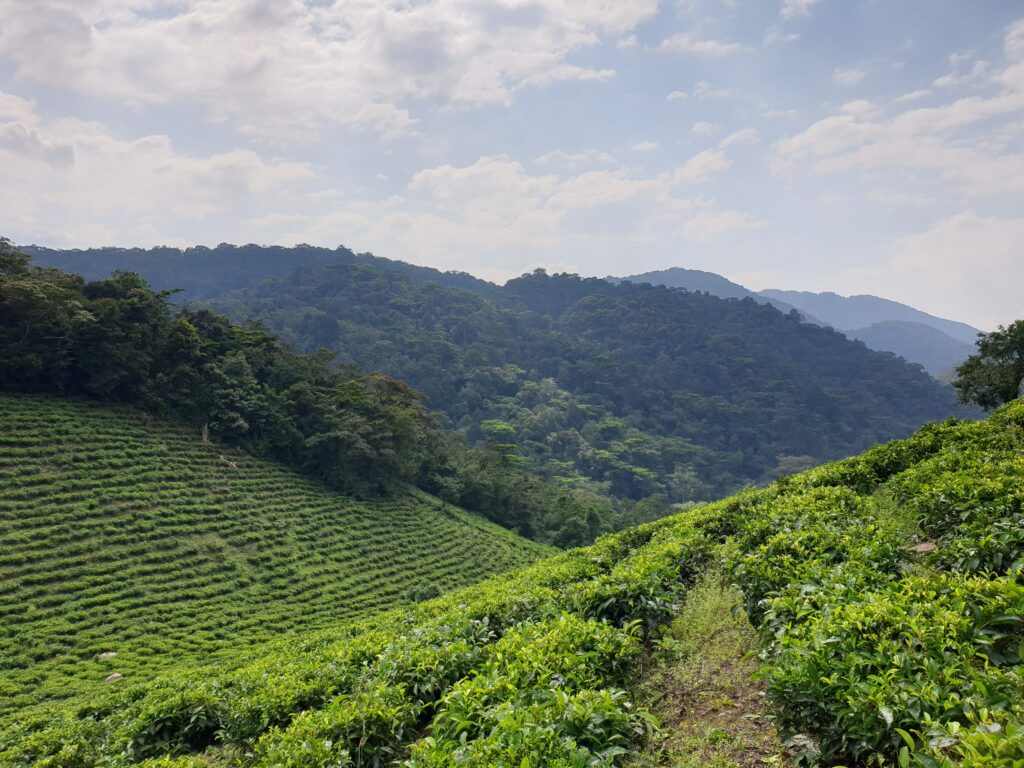
Tips and rules to do a trekking with the mountain gorillas
- It is totally advisable to wear mountain boots and suitable clothing for trekking that is breathable and in “safari” colors. We recommend long pants and long sleeves as well as a cap to protect you from the sun.
- Put a raincoat in your backpack as it can rain at any time and also mosquito repellent.
- The socks you wear must be long and we recommend that you wear them over your pants. We know that it is not glamorous at all, but doing so will prevent different insects from entering your body (especially ants).
- Also take at least two liters of water and some gardening gloves that will help you catch yourself in the branches and in the trees when you go through the jungle.
- You should also bring a lunch box with your lunch. They advise taking food with you in case you have to walk all day because they don’t know how long the trekking will last.
- If you feel unwell or know you have a contagious illness, such as a cold or the flu, cancel the visit. As we’ve said before, human-borne diseases are one of the most common causes of gorilla death. In times of Covid, precautions have been taken such as the fact that all visitors to a group of gorillas must wear two masks: one for trekking and another to change when viewing the gorillas.
- Always respect the guide’s instructions, he knows the area and the behavior of these animals very well.
- It is necessary that you respect the safety distance established by the guide and be silent when you are with the group of gorillas.
- If you take pictures, they must be without flash. Take a good objective, charge the batteries the day before and enjoy the moment.
- It is not allowed to do the trekking to those under 15 years of age.
- Trekking is a challenge. You have to be prepared to walk all day since the excursion can last between 1 hour and the whole day. You will slide, you will have to hold on to branches, you will make strong ups and downs… but you will arrive. And when you finish the excursion, you will appreciate that effort made to see these fantastic animals. It must be said that our group had people of different physical conditions and ages, and we stopped as many times as each one needed to take a breath and continue.
What to do in Bwindi Impenetrable Forest?
In the Bwindi Impenetrable Forest, not everything is limited to activities with the mountain gorillas. There are many things to do. So, if you are in Bwindi you cannot miss:
– Visit the mountain gorillas
As we have described above, the star activity of the Bwindi forest and that we fully recommend that everyone do regardless of the price of the permit. It is the main tourist activity in Uganda and allows not only the Bwindi NP to survive, but also other parks that do not receive as many visitors. Currently there are 16 gorilla families that are used to visiting them. There are also other families that are in the process of habituation to the human presence and that can be visited by buying a permit that costs about 1,500 USD. It must be said that the experience is much wilder and that there is a possibility that you will not see them or you will not see them so easily.

– Walk through the Bwindi Impenetrable Forest
Apart from visiting the mountain gorillas, you can go hiking through this fantastic tropical forest. All sectors of the park have different trekkings in the area where you can visit waterfalls, viewpoints, cross rivers… You have to pay the entrance to the park, which in 2021 was worth about 40 USD and add the cost of the excursion which is about 30 USD .
– Trekking to see birds, other primates and chameleons
The Bwindi Park has a great wealth of fauna that lovers of birds and small primates will enjoy. The price of the trek is about 30 USD and it is necessary to add the 40 USD of the entrance to the park. You can see several endemic species of birds such as the Short Tailed Warbler or the Grauer’s Broadbill.
– Cultural tour in a Batwa village
In the Bwindi area it is possible to visit the Batwa village. There are different activities that you can book including a Homestay for one night. You can book the excursion from your accommodation but taking into account that the company you hire favors the local community and responsible tourism. The price is around 70 USD for the whole day of the excursion.
– Visit the lake Mutanda
This lake located near the Bwindi forest has good views of the Virunga and the 3 mountains of Uganda that separate the Congo, Rwanda and Uganda. It is a freshwater lake very close to the town of Kisoro, located at the foot of the volcanoes. There are different islands within the lake full of birds and other species such as chameleons, snakes, frogs… It is a good excursion option to complete your stay in the area and relax after trekking with the gorillas.
Where to sleep?
There are different accommodation options located according to the sector of the park that you will visit. It is important that you first reserve the gorilla permit so that you can later choose the accommodation that is in that sector that you have reserved. Remember that gorilla trekkings in the morning leave early to avoid the afternoon rains, therefore it is fully advisable to be near your entrance sector. We recommend:
– Bwindi Backpackers & Gorilla Closeup Lodge: This accommodation is located right in front of the Bwindi Impenetrable Forest, very close to the Nkuringo access but also close to Rushaga. It has different bedrooms, but also private cabins and lodges with an indoor toilet. It has a restaurant with a great kitchen, and a shop where you can buy different souvenirs. Seith, its owner, manages last minute permits to go see the mountain gorillas. We spent two nights there and it was the best accommodation we could have stayed in, with great value for money, very good views of the surroundings and very close to the access of Nkuringo and Rushaga. To book, you can click here or contact directly with Seith at: +256 7726618542.
– Mutanda Lake Resort: This lodge is located in front of Lake Mutanda, with stunning views and a location close to the Rushaga area. It has different types of rooms for different budgets. To book, you can click here.
– Bwindi Panorama Ruhija Natural Resort: This accommodation is located in the Ruhija area. It offers camping options and cabins in a spectacular surroundings, and they have an interesting reforestation project. If you want to book you can call +256 782 679359.
Our route
DAY 1: We woke up at Lake Bunyonyi and after going through Kabale to have a wheel fixed at a gas station, we made a day’s journey until we reached our accommodation in Bwindi. The route was very beautiful, passing through rural villages high in the mountains, small tea plantations that emerged from the sloping terrain, children who waved as they passed by and a gravel and stone road only suitable for 4×4. We entered the Bwindi Impenetrable Forest, and it was noticeable by the altitude that we were taking and also by the landscape that we were passing. We arrived at Bwindi Backpackers at noon, where we were greeted with a welcome dance by the local community, we were able to rest enjoying some fantastic views and we began to prepare for the next day’s journey with the mountain gorillas.
DAY 2: Today was one of those days that we had marked the calendar. We would visit one of the most beautiful animals on the planet and with which humans share many things: mountain gorillas. Currently, they can only be seen in Uganda, Rwanda and Congo and are in danger of extinction. In the morning, we arrived at the entrance to Nkuringo, the access point to enter the Bwindi Impenetrable Forest on foot in search of these animals. After a first briefing, they told us that that day we had to see the Nkuringo family, famous for Rafiki, the head of a family that was unfortunately killed by some humans who found him when they returned from hunting some animals and killed him. Despite the death of the leader, the family was still together and we would be lucky enough to see small 2-3 year old gorillas and adults who are turning silverback by age. What nerves! We would spend an hour with an animal with an incredible resemblance to humans, seeing how they interact and how close we are with them. We were accompanied by 2 rangers who, with walkie-talkies, were already communicating with two people who were inside the forest in search of this group of gorillas. We were also accompanied by different carriers who carried the backpacks (we did not use any), an American couple, a couple from the United States who worked on Facebook and who wore glasses with a video camera installed next to the lenses, and a French girl who also slept in our accommodation.
We began to walk down a steep descent that took us towards some tea plantations that were there to act as a safety limit between the park and the different plantations around it so that the gorillas did not get too close to humans, and then we entered in the Bwindi Impenetrable Forest. We walked in the middle of the trees, creating open paths with the machetes of the rangers that were opening the way. Luckily, despite being in the rainy season, the weather was sunny. Walking through the forest where the mountain gorillas live caused a strong emotion and at the same time a certain respect, because there the animals were totally free, cared for and watched over by the different communities and rangers who work to avoid poaching, protect these animals and keep one of the planet’s treasures.

After walking for about an hour and a half, we were reunited with the other two rangers who had already located the group. Now, yes, it was time to take out the cameras but above all to open our eyes wide to retain a scene in our retinas for an hour that we would surely not forget: we had the mountain gorillas in front of us!
Seeing them up close is captivating. We would not have imagined that we would have them less than two meters away, but the typology of the terrain, in the middle of bushes and trees, allowed us to get a little closer than what is normally done. Really, humans are a lot like these animals. We saw how the little ones played, how they put the fingers of their hands (which were human hands) in their mouths, how they stretched, how the adults came down from the trees and we began to see the color change of the back, how big they were, how they lived as a family, how they looked at you with a penetrating gaze and beautiful eyes… Really, impressive! We were also lucky to see a little one year old hanging on his shoulders with his mother and the different playings and little fights that took place with 3 gorillas that were between 2 and 5 years old. They were like children!
The show in front of us was incredible. Sharing an hour (which flies by) with a group of gorillas is an experience that we will always remember. Despite having expensive prices, when you see all the work behind the conservation and protection of this endangered species that is only found in this part of the African continent, you understand the cost of this activity
It was time to say goodbye to this group captivated by the beauty, greatness and human similarity that we have with mountain gorillas. It was time to do the way in reverse, with a stop prior to the tea plantations to have lunch and face the climb back to our vehicles and return to the access point, where the guide gave us a last talk and they gave us some diplomas accrediting the visit to mountain gorillas.
We returned to the accommodation where we could see the photographs and talk about these animals and the importance of not disappearing. It had been a very intense day that we could already cross off the calendar, but that surely we would not erase because we had the luck to see mountain gorillas up close, one of the endangered animals of Africa and that can only be located in that continent.

DAY 3: After resting from the emotions of the previous day, today it was time to leave the Bwindi Impenetrable Forest to approach the border with Tanzania (unfortunately, the border with Rwanda that we wanted to cross was closed due to Covid). On the way, however, we would pass by Lake Mutanda, from where you can see the Virunga and the 3 mountains of Uganda that separate the Congo, Rwanda and Uganda. We drove through rural towns, passing people with hoes and children running behind our car, watching them croping on steep terrain and crossing roads with maximum concentration so as not to fall down the cliff. After a long time, we were able to see Lake Mutanda from an elevated view for the first time, which we loved. A great success to have gone!
It was a lake that, like the Bunyonyi, was also volcanic and had different islands within it. Also, the mountains of Mgahinga NP could be seen very well behind. We went down until we reached the foot of the lake where we could enjoy different daily scenes, take some photographs and drive around it until we reached Kisoro, a town that years ago was the entrance of many refugees who came from the war in the Congo. After filling the car with diesel, we left the lake and the Bwindi Impenetrable Forest behind, heading towards Tanzania with many memories and landscapes of these last days that will surely be very present in our trip.


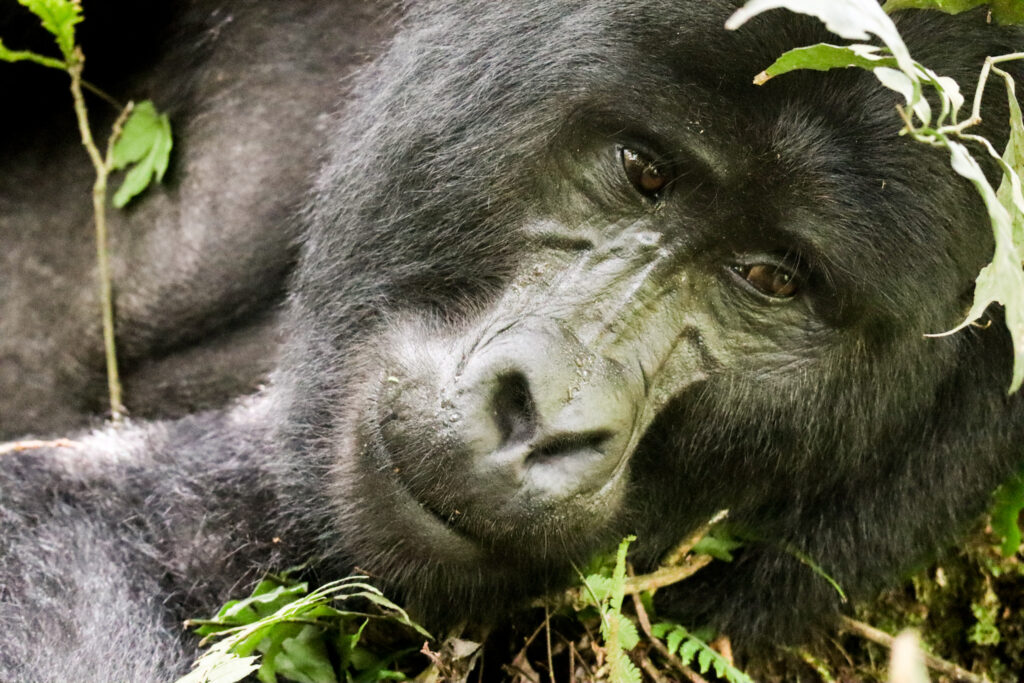

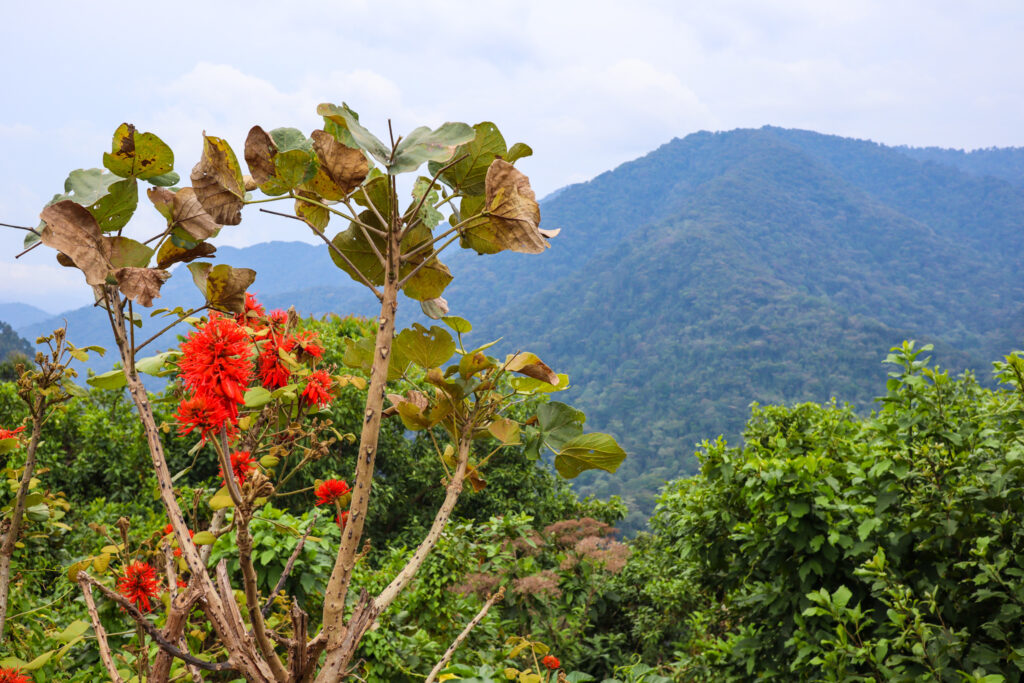
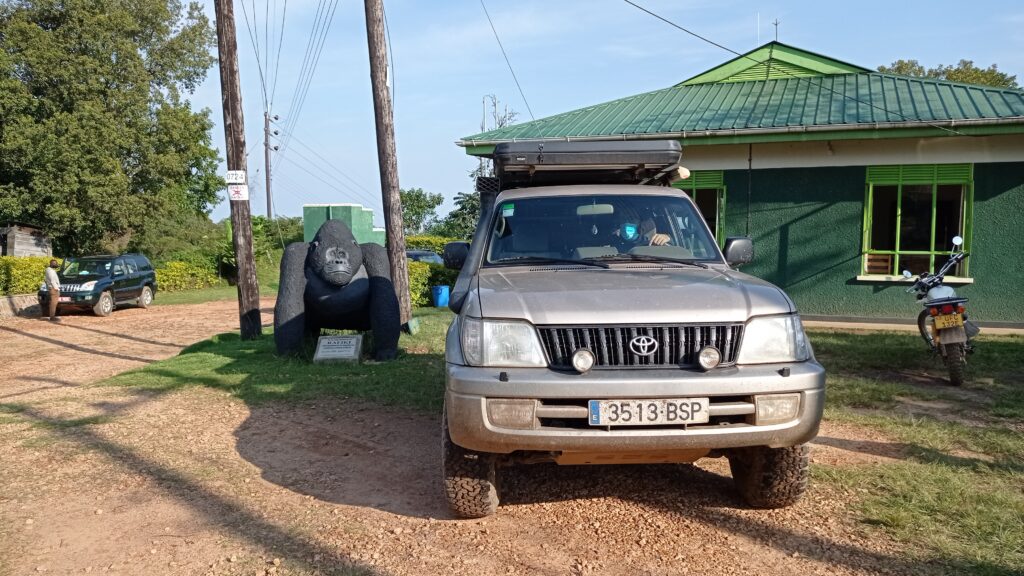
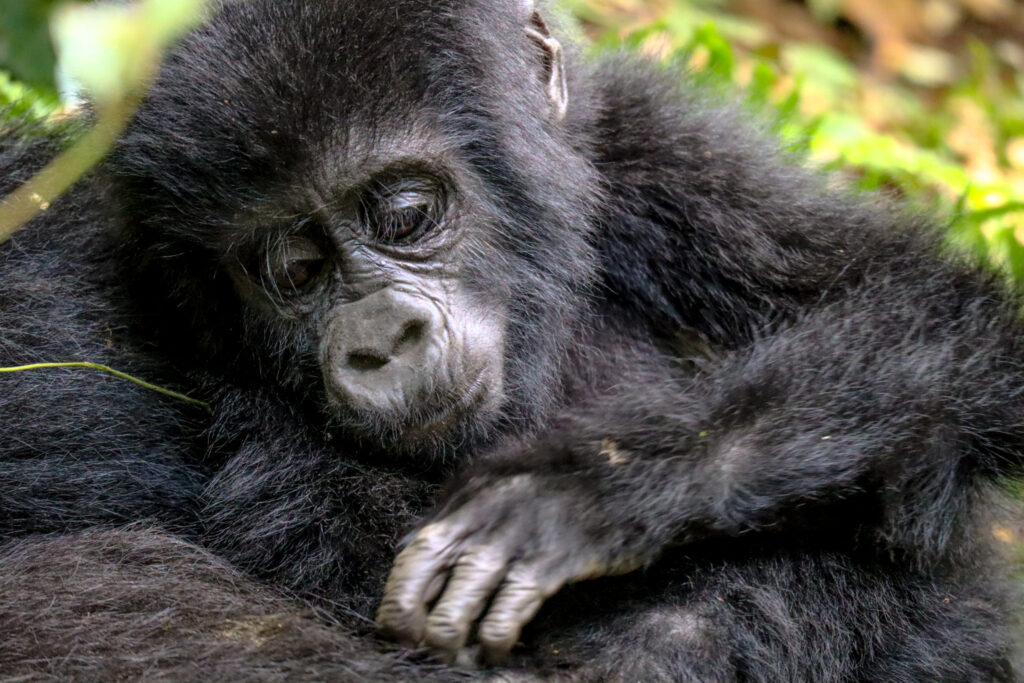
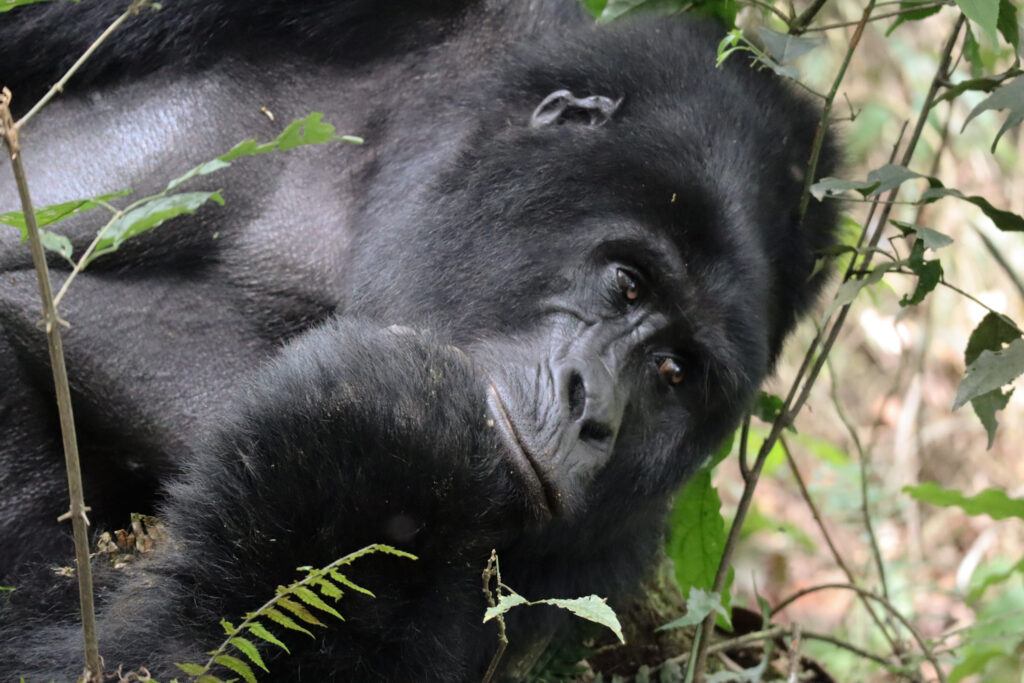


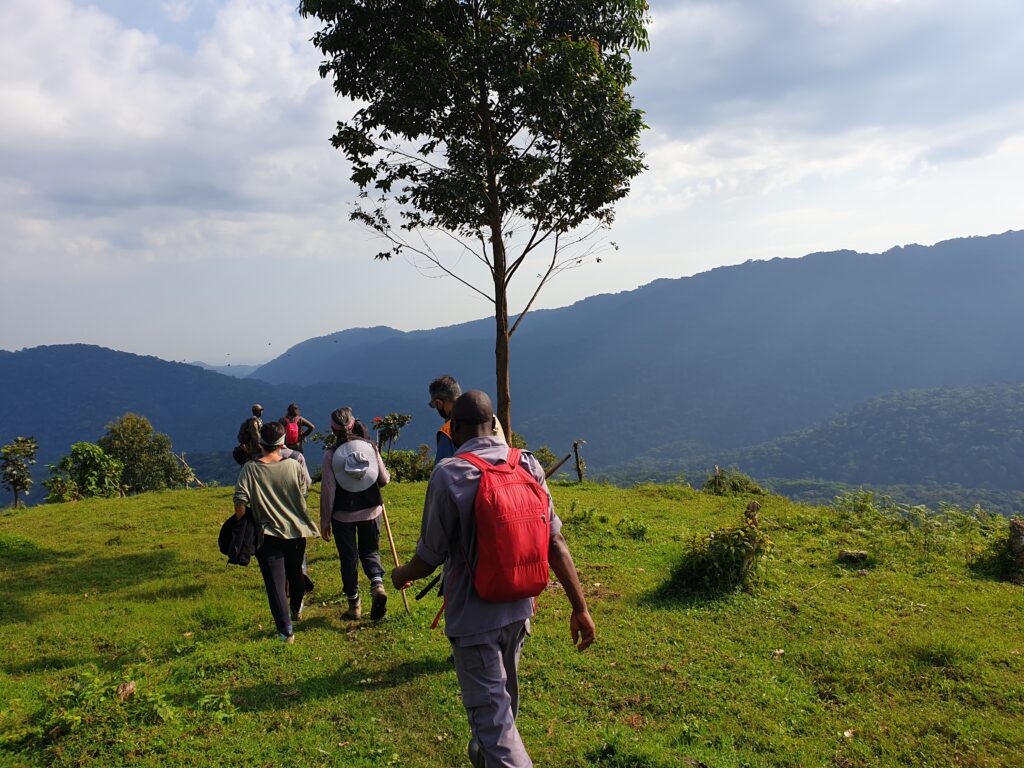
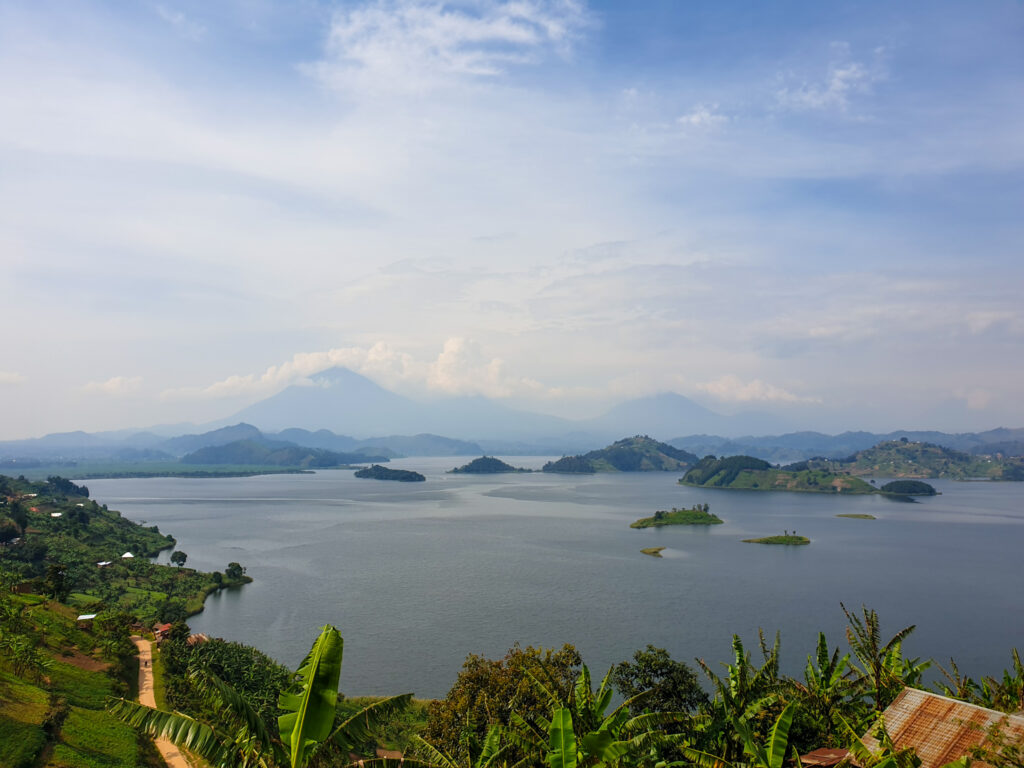
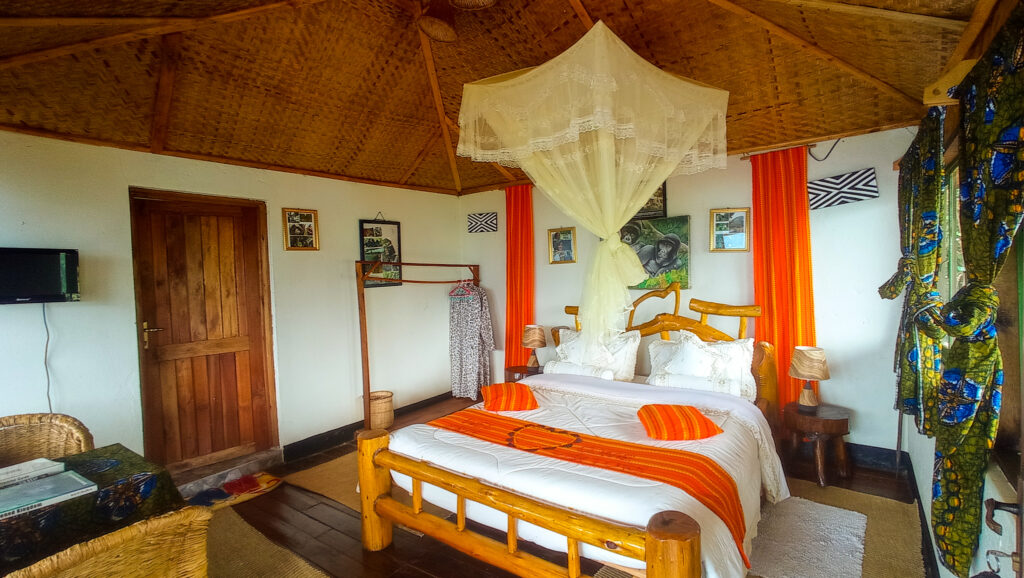
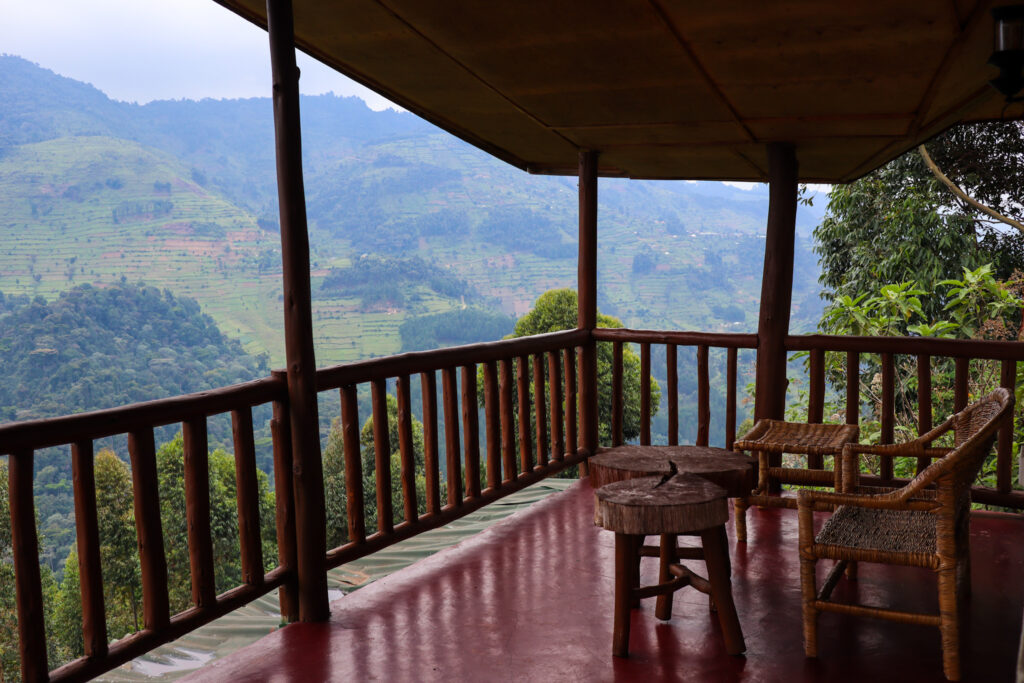
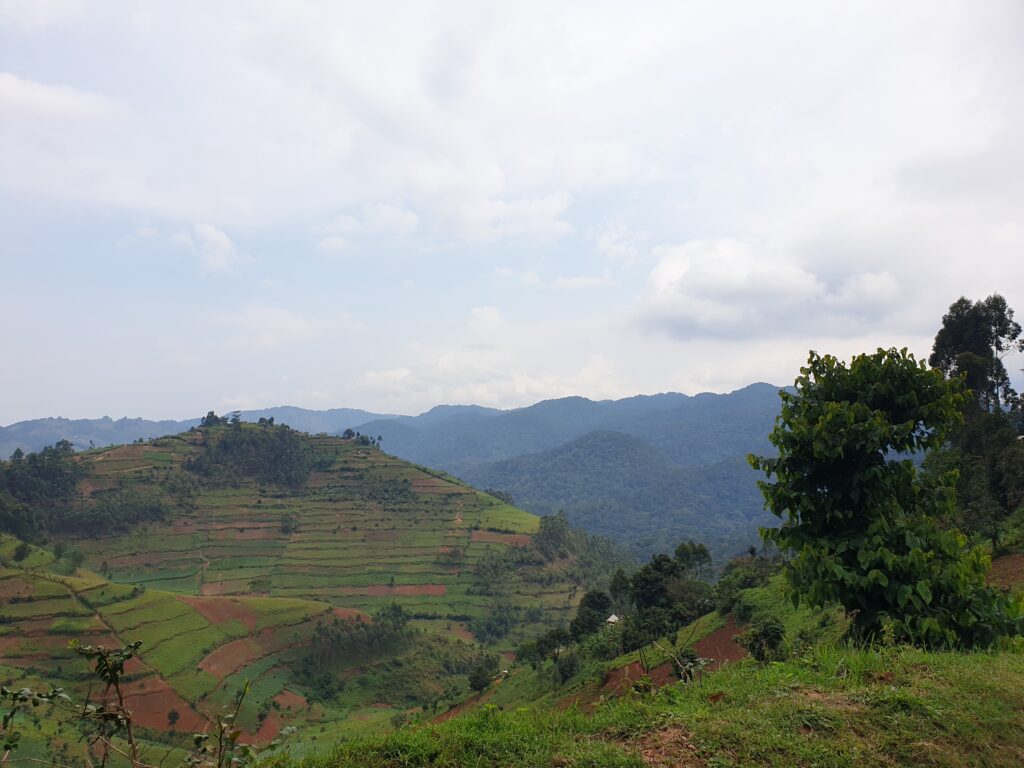



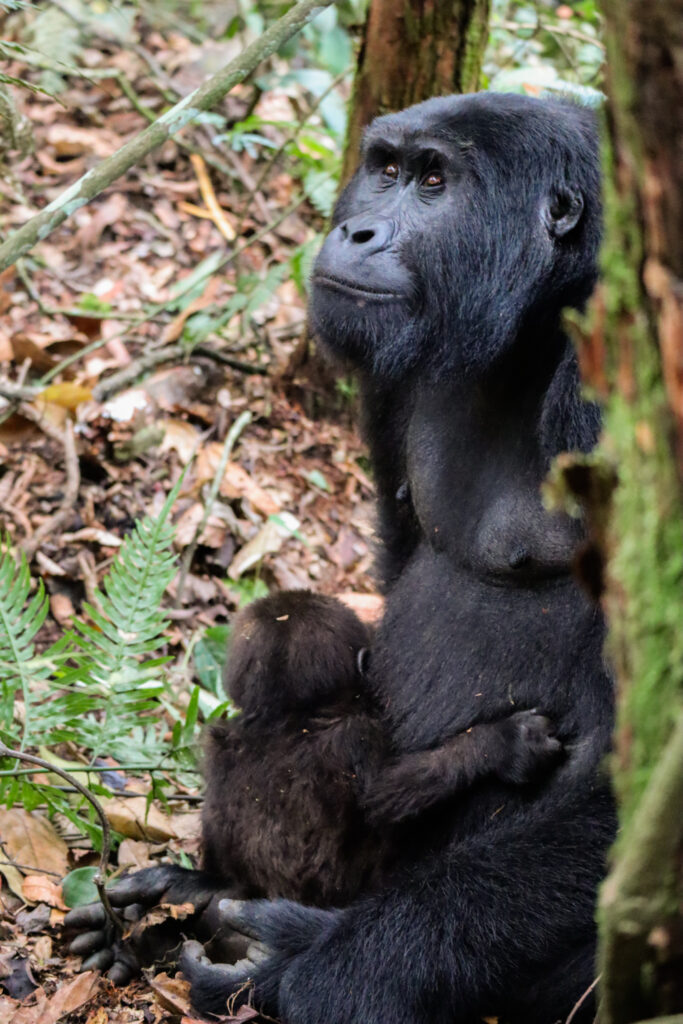
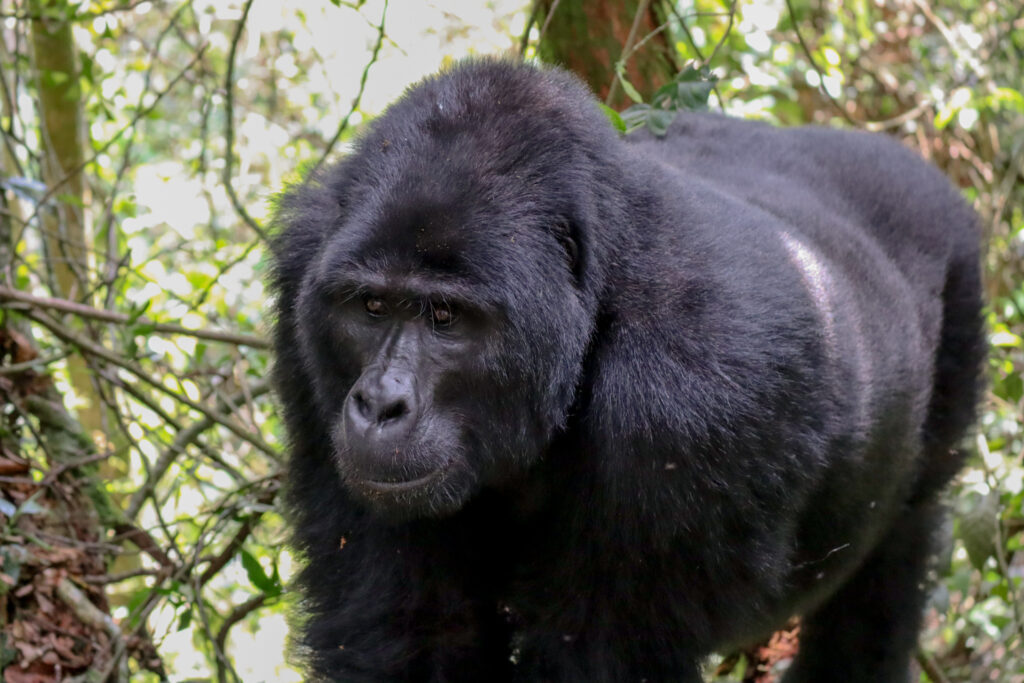

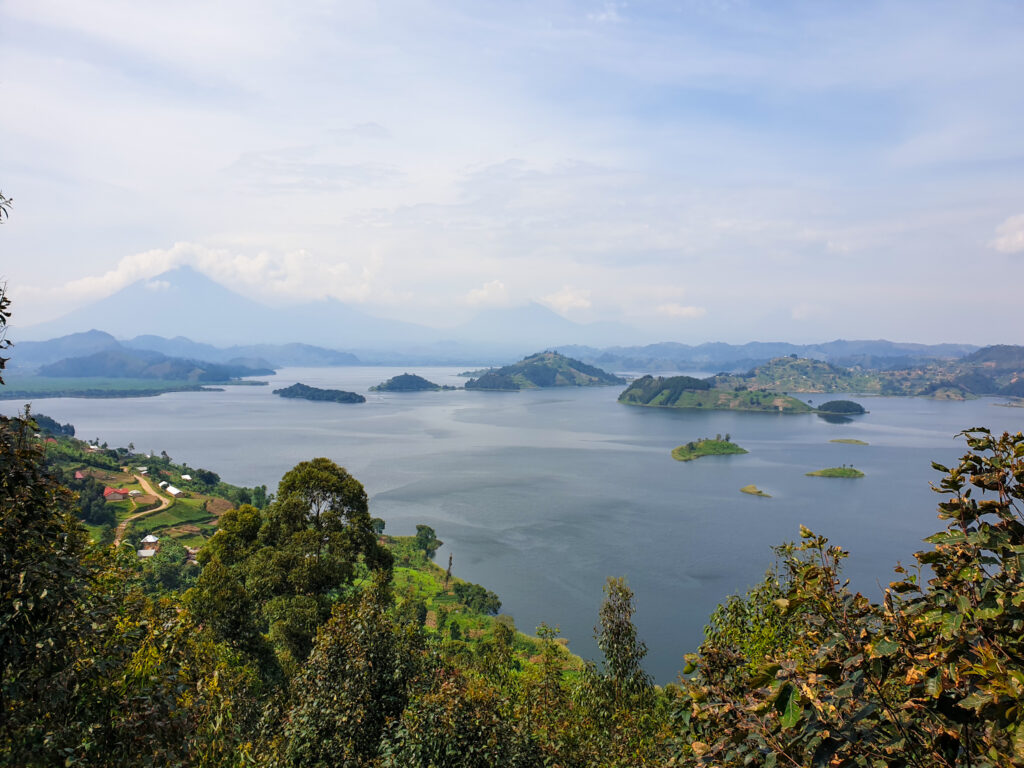
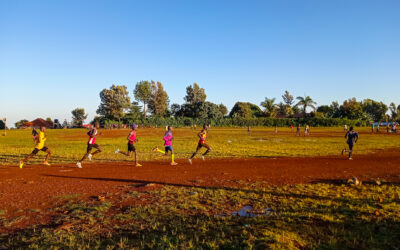


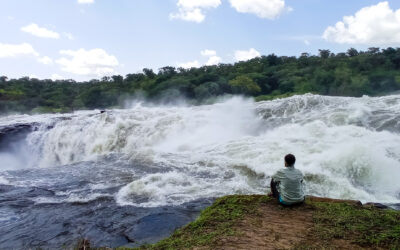
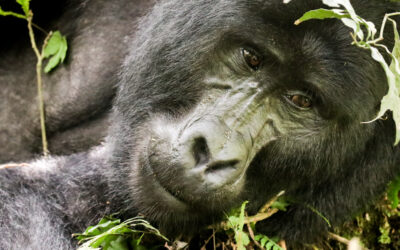
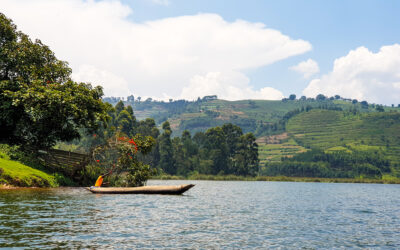


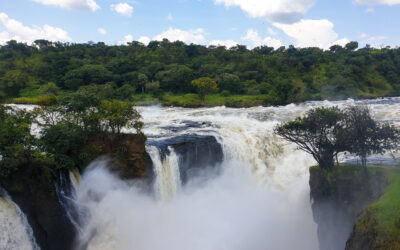
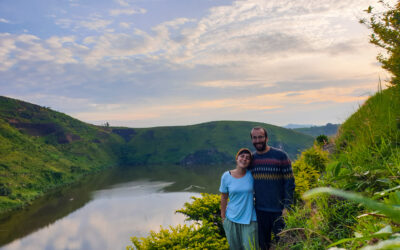
0 Comments